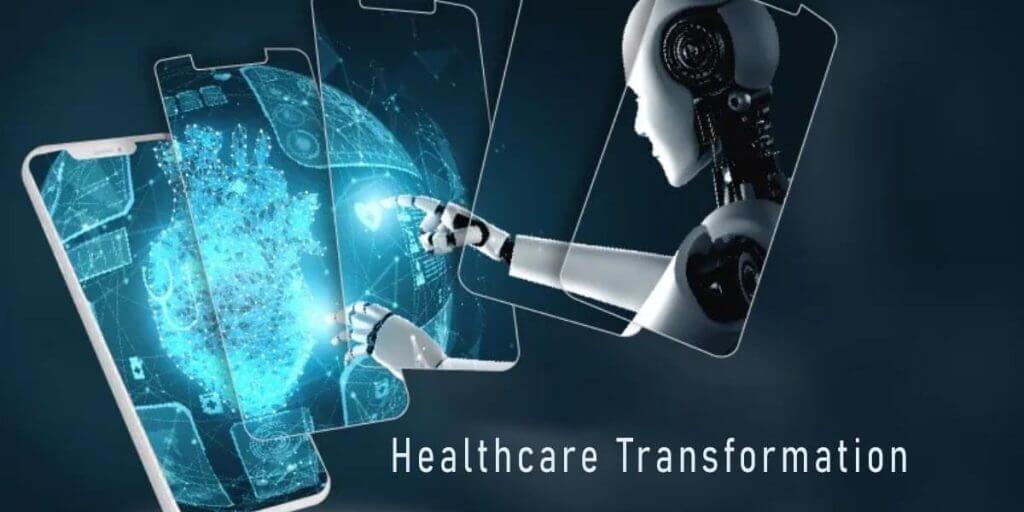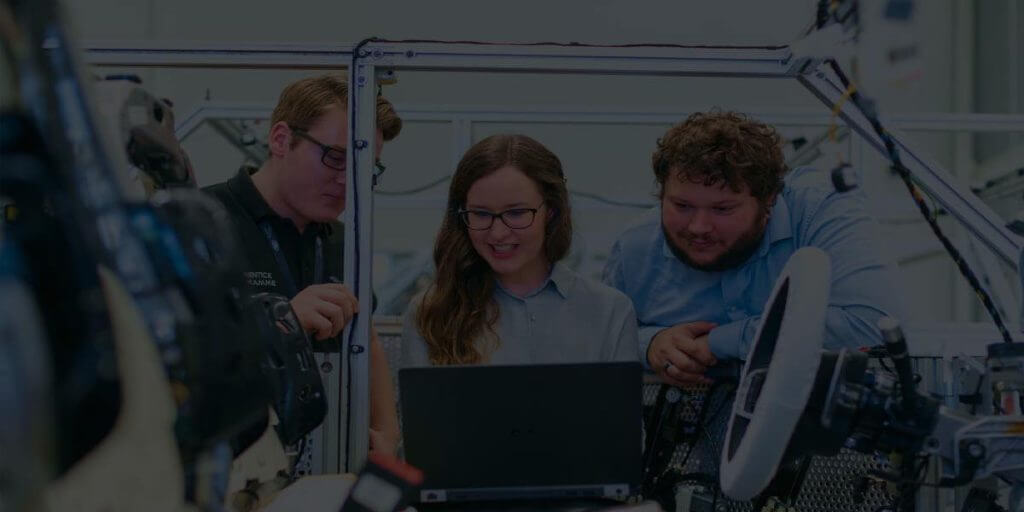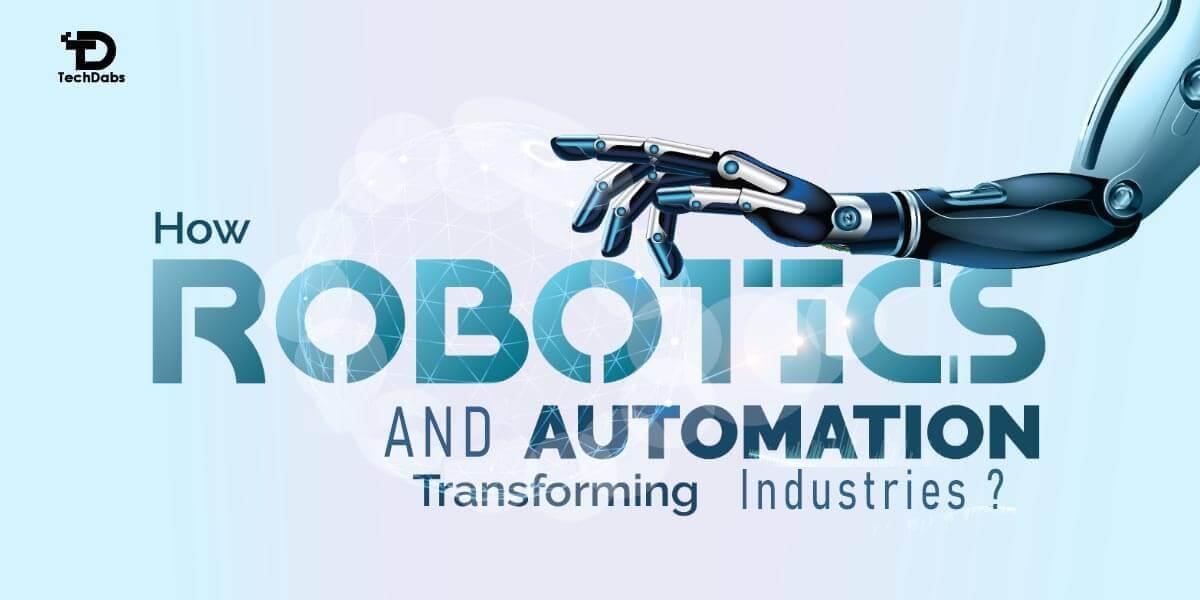Robotics and Automation are Transforming Industries
Robotics and automation technologies are revolutionizing the world of work at an unprecedented pace. This comprehensive guide explores current trends and implications based on extensive research. Key sections examine definitions of robotics/automation, transformations across sectors, strategic approaches companies adopt, addressing job disruption concerns, case studies, and envisioning optimized futures through sustainable progress. Let’s begin our informative journey!
What are Robotics and Automation?
Before delving into transformations, it’s important to define core concepts. In simple terms, robotics refers to machines capable of performing physical tasks, while automation involves software/systems executing operational and cognitive functions. Both fields are advancing rapidly through intertwining technologies like AI, machine learning, computer vision, and more. As capabilities evolve, the lines between human and machine roles will continue to blur in innovative ways.
How are Industries Being Transformed?
Emerging applications across manufacturing, healthcare, agriculture, transportation, warehousing and beyond are streamlining workflows while expanding what’s possible. Collaborative robots work safely alongside people, freeing them for more engaging work. Autonomous vehicles and drones are revolutionizing logistics. Intelligent farms maximize yields sustainably. Overall, robotics is boosting competitiveness, quality and access to necessities globally in transformative ways.
Manufacturing Revolution
Manufacturing is among the industry’s most rapidly transforming through robotics. Collaborative robots or “cobots” work safely alongside humans, expanding automation possibilities. Early applications include assembly, material handling, quality inspection and packaging. One study found cobots increased small business productivity by over 25% on average. As costs decline, their accessibility will grow tremendously.
Meanwhile, fully autonomous mobile robots are revolutionizing warehousing and logistics. Intelligent systems like driverless forklifts and delivery drones streamline material movement within facilities and between locations. Early adopters report over 30% efficiency gains. As AI capabilities advance, autonomous systems will coordinate complex operations seamlessly.
Robotics is boosting manufacturing competitiveness through reduced costs, improved quality and expanded capacity. They free human workers to focus on more engaging creative roles. If job transitions are thoughtfully managed, all will benefit from increased prosperity.
Healthcare Transformation

Robotics is transforming healthcare delivery through new surgical, rehabilitation and assistive technologies. Minimally invasive surgical robots perform procedures with enhanced precision, flexibility and scale through tiny incisions. Early research associates their use with reduced recovery times. Exoskeletons and prosthetics powered by robotics also enhance mobility for patients.
Companion robots show promise in assisting older people and individuals with disabilities through daily living support. Early models provide medication reminders, virtual companionship and safety monitoring. As AI capabilities advance, assistive robots will become more personalized and capable care partners. This promises to expand independent living possibilities and reduce healthcare costs.
Overall, robotics enhances the quality, accessibility, and affordability of care. If developed and applied equitably with oversight, these technologies hold tremendous potential to improve human well-being. Their role will continue expanding to benefit more communities worldwide.
Agricultural Transformation
Robotics is increasing agricultural productivity and sustainability globally. Autonomous tractors and harvesters equipped with computer vision and AI streamline crop monitoring and harvesting tasks. Early applications report over 20% increased yields on average. Intelligent greenhouses precisely control environments, maximizing plant health with less waste.
Meanwhile, robotic milking systems and precision livestock farming technologies improve animal welfare and product quality. Drones equipped with multispectral sensors also enable fast, non-invasive crop monitoring over vast areas at a lower cost than traditional methods. This supports more strategic farming decisions.
Overall, robotics is boosting agricultural efficiency and resilience against climate threats. It frees human workers from more engaging roles while helping feed a growing population sustainably. With equitable access, robotics holds tremendous promise in improving global food security.
Transportation Transformation
Robotics is revolutionizing transportation globally. Self-driving vehicles equipped with AI, sensors and wireless connectivity promise safer, more efficient movement of people and goods. Early applications include autonomous shuttles, trucks and delivery drones. One study associated the technology with over 30% reduced accident rates on average.
Mass transit is also transforming through robotic augmentation. Intelligent subway and train systems powered by AI coordinate schedules seamlessly while analyzing ridership patterns to expand access proactively. Overall, autonomous transportation holds the potential to reduce emissions, expand mobility for all and streamline logistics tremendously.
Warehousing Revolution
Warehousing is rapidly automated through mobile robots and intelligent systems. Autonomous vehicles like driverless forklifts coordinate material movement within vast facilities up to 3 times faster than their human-operated counterparts. Computer vision enables machines to navigate complex environments precisely while avoiding obstacles.
Intelligent inventory and order fulfilment systems powered by AI and machine learning also optimize warehouse operations end-to-end. One study found automation reduced order errors by over 50% on average. As technologies advance, fully autonomous warehouses coordinating all processes may soon handle distribution centres of any scale. Overall, robotics is revolutionizing logistics globally through streamlined operations.
Envisioning Future Economic Models

If thoughtfully managed, robotics and AI hold the potential to create new high-skill, high-wage industries. Emerging fields like robotics engineering, mechatronics, AI programming and more already show strong projected growth. New decentralized business models may also take shape, leveraging distributed manufacturing and on-demand 3D printing.
Universal basic income policies and education reforms present opportunities to empower workers through lifelong reskilling. With proactive strategies and collaboration between all stakeholders, robotics innovations suggest economic models that maximize prosperity for humanity through cooperation between people and technology. An equitable future remains within reach through open-minded progress.
Addressing Job Disruption and Ethics
While robotics expands what’s possible, transitioning displaced workers requires strategic planning. Early research suggests new jobs will be created in growing sectors like AI, robotics engineering and care work. Reskilling programs are needed to equip workers for these roles through education and vocational training.
Universal basic income policies also help smooth adjustment periods for workers. Careful regulation and oversight ensuring ethical, safe and transparent robotics development is essential to earning public trust. Addressing concerns preemptively through open dialogue will optimize opportunities for all. Collaboration between humans, robots and policymakers can sustainably maximize the benefits of transformations.
Case Study: Strategic Automation at Anthropic
Leading companies are thoughtfully navigating industrial revolutions. This case examines the strategic approach of AI safety startup Anthropic. Anthropic focuses on collaborative robotics assisting humans versus replacing them. Its Constitutional AI techniques also help ensure robot behaviours remain helpful, harmless, and honest through value-aligned training.
Read More: How does Technology Affect the Way we Deal with Business Failures
Anthropics partners closely with workers to understand needs before developing technologies. Reskilling programs then equip personnel with transitioning roles. Early results found that job satisfaction increased on average as roles became more engaging when working with robots. Anthropic’s approach offers insights for optimizing human-robot collaboration at scale sustainably.
Pros and Cons of Adoption
Like any disruptive technology, robotics presents advantages and challenges requiring open examination. Benefits include increased productivity, improved quality control, expanded capacity, and safer working conditions. However, job disruption risks must be mitigated through proactive strategies if full societal benefits are to be realized. Balanced perspectives will optimize opportunities for all.
Conclusion
If developed and applied strategically, Robotics and AI can profoundly transform industries and societies. Emerging technologies increase opportunities when thoughtfully implemented with oversight. Addressing concerns through open dialogue and supporting workers’ transitions will optimize benefits. Focusing collaborative efforts on sustainability, inclusion, and engagement holds promise. The future, if equitable, looks bright for robotic innovations to benefit all of humanity through cooperation between humans, machines, and policymakers. Continuous progress and evaluation are needed to maximize learning and prosperity for all.





